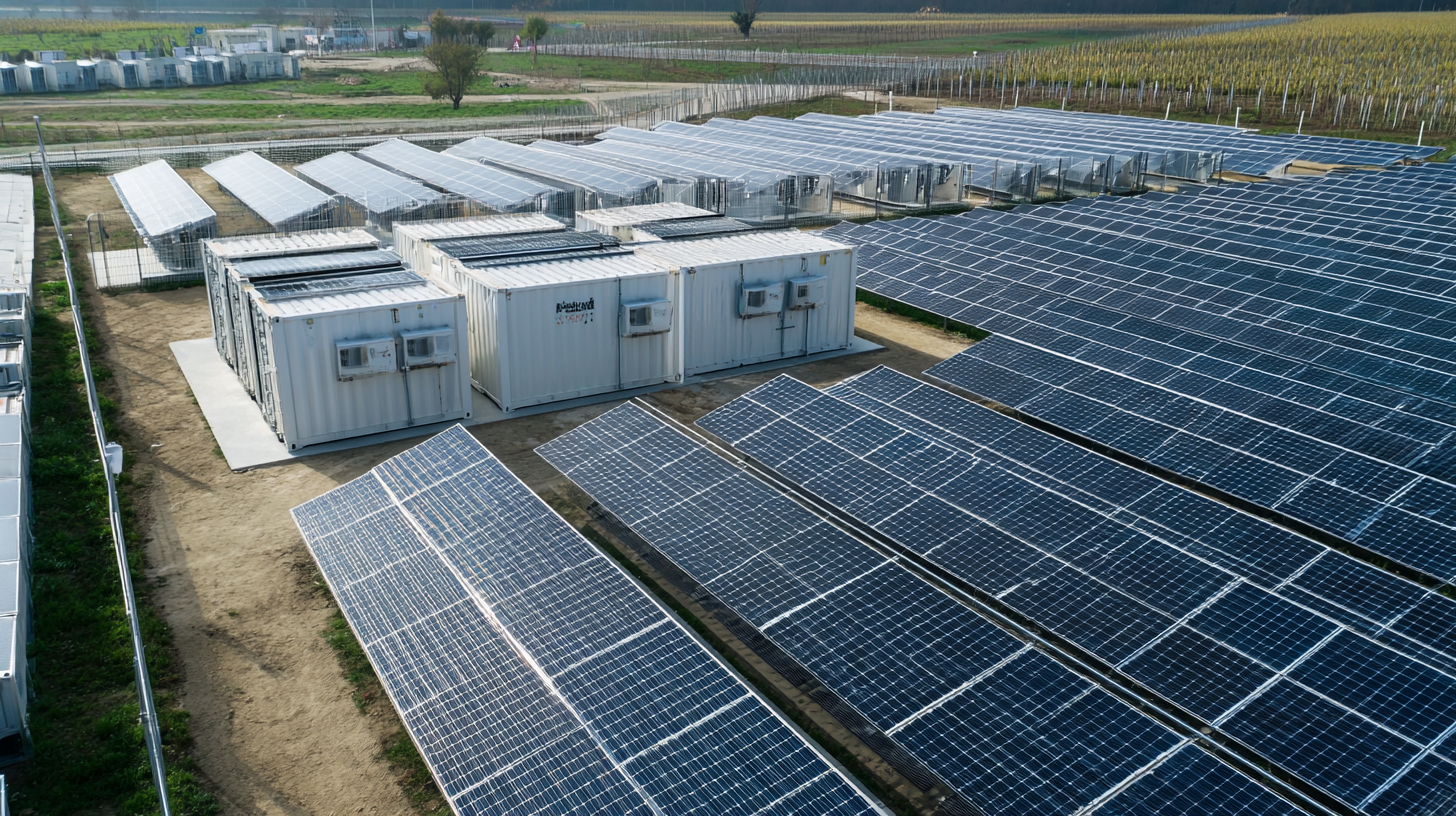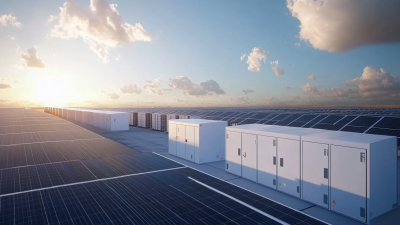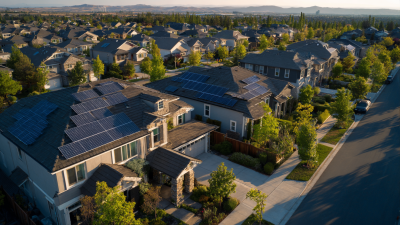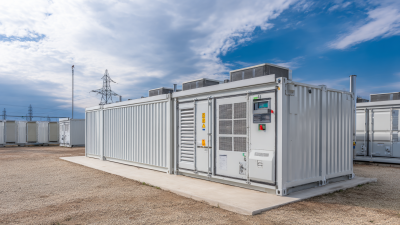As we venture deeper into an era defined by sustainable energy solutions, Solar Energy Storage emerges as a pivotal component in the quest for affordability and efficiency in electricity consumption. According to a report by the International Renewable Energy Agency (IRENA), the global solar energy market is projected to grow exponentially, with energy storage systems playing a crucial role in enhancing the reliability and economic viability of solar power. By integrating advanced storage technologies, households and businesses could potentially see a staggering reduction of up to 60% in electricity costs by 2030. Furthermore, a study from Lazard reveals that as the cost of solar energy continues to decline, the combination of solar generation and storage will be a game changer, enabling consumers to maximize on-site generation while minimizing reliance on the grid. This article explores the transformative potential of Solar Energy Storage and its implications for the future of energy economics.

As the world shifts towards renewable energy, the role of energy storage in solar power systems has never been more critical. With the advancement of battery technologies, solar energy can now be harnessed and stored for use during periods of high demand or low sunlight, creating a more reliable energy supply. This integration not only maximizes the benefits of solar energy but also significantly cuts costs, leading to an anticipated reduction of electricity expenses by up to 60% by 2030.
**Tip:** When considering a solar energy system, evaluate different types of energy storage solutions, such as lithium-ion and flow batteries, to find the one that best suits your needs. Each technology has its own advantages, such as discharge times and lifespan, which can impact overall efficiency and cost-effectiveness.
Moreover, the increasing importance of energy storage has paved the way for innovation in solar power systems. Modern storage solutions make it possible to shift energy usage to periods when electricity is less expensive, further enhancing savings for consumers. This not only supports individual households but also contributes to a more stable and sustainable energy grid.
**Tip:** Look for solar providers that offer integrated energy storage solutions, as this can simplify installation and management, while often providing better warranties and support.
As the world transitions towards renewable energy, solar energy storage solutions are poised to revolutionize how we consume electricity. With advancements in technology, these storage systems have become more efficient and cost-effective, leading to projected cost savings of up to 60% in electricity by 2030. By harnessing solar power and storing it for later use, households and businesses can significantly reduce their reliance on the grid, avoiding peak demand prices and benefiting from lower rates.
Moreover, these advanced storage solutions not only stabilize energy costs but also enhance energy independence. As more consumers adopt solar energy systems paired with storage technology, the demand for grid electricity will decline, driving further investments in renewable resources and leading to a more sustainable energy landscape. This transformative potential makes solar energy storage not only a financial boon but also a crucial step toward a greener future. The combination of innovative technology and strategic implementation will ensure that significant savings and environmental benefits are realized in the coming years.

As the demand for electricity continues to surge, particularly due to advances in AI technology driving up data center consumption, the shift towards renewable energy solutions is becoming increasingly vital. Reports indicate a significant trend towards solar energy storage adoption, with forecasts suggesting that by 2030, implementing solar energy storage could lead to a staggering 60% reduction in electricity costs. This transition not only supports sustainability but also addresses the urgent need for infrastructure capable of handling growing energy demands.
Tips: To maximize the benefits of solar energy storage, consider integrating energy management systems that optimize performance. Additionally, keeping abreast of local incentives and rebates can enhance the financial viability of solar investments.
With the increasing recognition of the environmental and financial benefits of solar energy storage, market trends are aligning to support wider adoption. Innovations in battery technology and decreasing costs are making solar storage solutions more accessible to both residential and commercial users. As we move closer to 2030, it is crucial for stakeholders to embrace these developments, fostering a sustainable future in energy consumption.
Tips: Engaging with local solar energy providers can help ensure that installations are tailored to specific energy needs, maximizing efficiency and cost savings.
| Year | Total Installed Solar Capacity (GW) | Energy Storage Capacity (GWh) | Reduction in Electricity Costs (%) | Market Adoption Rate (%) |
|---|---|---|---|---|
| 2023 | 150 | 10 | 10 | 12 |
| 2024 | 180 | 15 | 15 | 15 |
| 2025 | 220 | 25 | 25 | 20 |
| 2026 | 260 | 40 | 35 | 25 |
| 2030 | 400 | 100 | 60 | 40 |
The dawn of solar energy storage technology is revolutionizing the way we approach energy consumption and cost management. Recent innovations in battery technology, such as lithium-ion and flow batteries, have significantly improved efficiency, allowing users to store excess energy produced during peak sunlight hours. This not only enhances the reliability of solar energy but also reduces dependency on conventional power sources, thereby driving down electricity costs.
In addition to advancements in battery efficiency, innovative software solutions are emerging to optimize energy usage and predict consumption patterns. Smart grid technology, integrated with artificial intelligence, enables real-time monitoring and automated energy distribution, maximizing the output of solar systems. As these technological developments continue to evolve, they pave the way for a more affordable and sustainable energy future, with the potential to cut electricity costs by 60% by 2030. The combination of improved energy storage solutions and smart management systems is transforming the energy landscape, promising a more equitable access to renewable energy for all.
The advent of innovative policies worldwide is poised to transform the solar energy landscape significantly. China's recent reforms, phasing out fixed-price guarantees linked to coal for solar and wind energy, could encourage a more competitive market, driving down prices for consumers. This shift may not only assist China in meeting its ambitious climate goals but could also reverberate throughout the global renewable sector. As reported by the Solar Energy Industries Association, these infrastructural changes are crucial for capitalizing on renewable resources to achieve net-zero emissions.

Moreover, Vietnam's revision of its solar feed-in tariffs reflects a growing trend in incentivizing energy storage within the renewable sector. The updated policies could enhance profitability for solar projects while promoting broader adoption of energy storage systems. According to the 2026 Renewable Energy Industry Outlook, as these regulatory changes take effect, the industry is expected to witness a surge in investments, driving innovation and technological advancements. Analysts predict that by 2030, strategic policy implementations coupled with advancements in energy storage technology could lead to an impressive 60% reduction in electricity costs for consumers, marking a pivotal moment in the transition towards clean, affordable energy.





